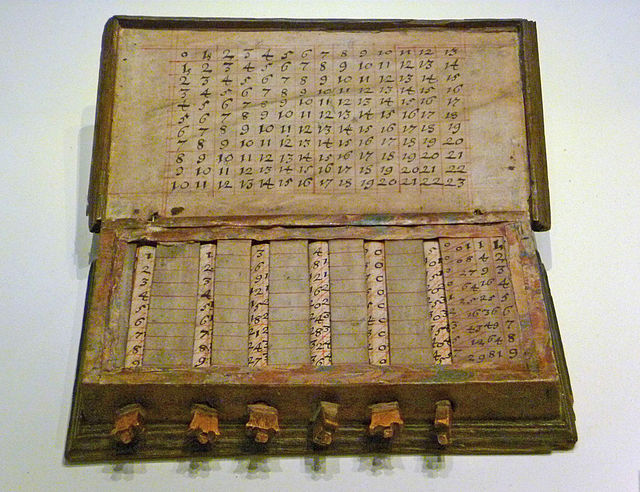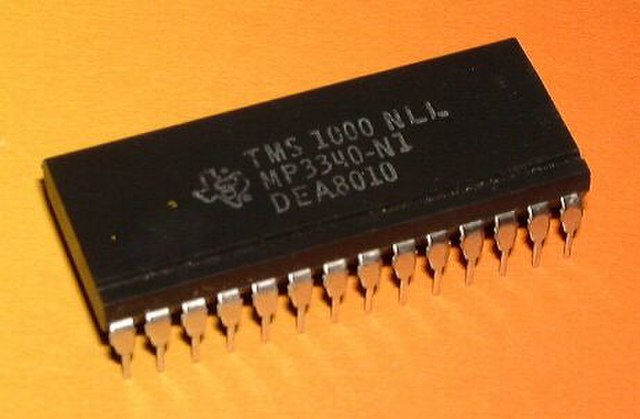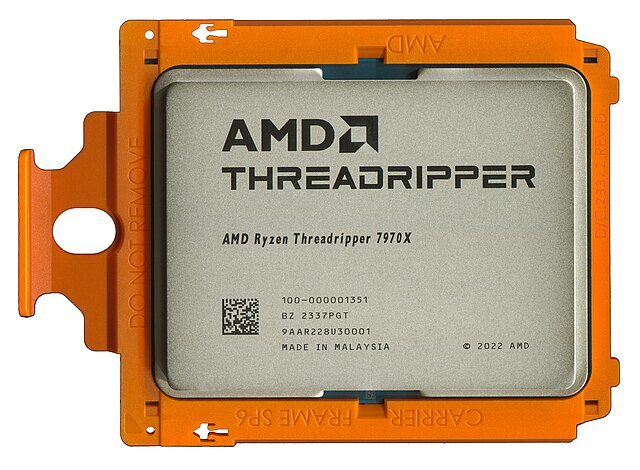History of computing hardware
The history of computing hardware covers the developments from early simple devices to aid calculation to modern day computers.
The Ishango bone is thought to be a Paleolithic tally stick.
View through the back of Pascal's calculator. Pascal invented his machine in 1642.
A set of John Napier's calculating tables from around 1680
Detail of an arithmometer built before 1851. The one-digit multiplier cursor (ivory top) is the leftmost cursor.
A microprocessor is a computer processor for which the data processing logic and control is included on a single integrated circuit (IC), or a small number of ICs. The microprocessor contains the arithmetic, logic, and control circuitry required to perform the functions of a computer's central processing unit (CPU). The IC is capable of interpreting and executing program instructions and performing arithmetic operations. The microprocessor is a multipurpose, clock-driven, register-based, digital integrated circuit that accepts binary data as input, processes it according to instructions stored in its memory, and provides results as output. Microprocessors contain both combinational logic and sequential digital logic, and operate on numbers and symbols represented in the binary number system.
Texas Instruments TMS1000
Intel 4004
Motorola 6800 (MC6800)
A modern 64-bit x86-64 processor (AMD Ryzen Threadripper 7970X, based on Zen 4, 2023)








